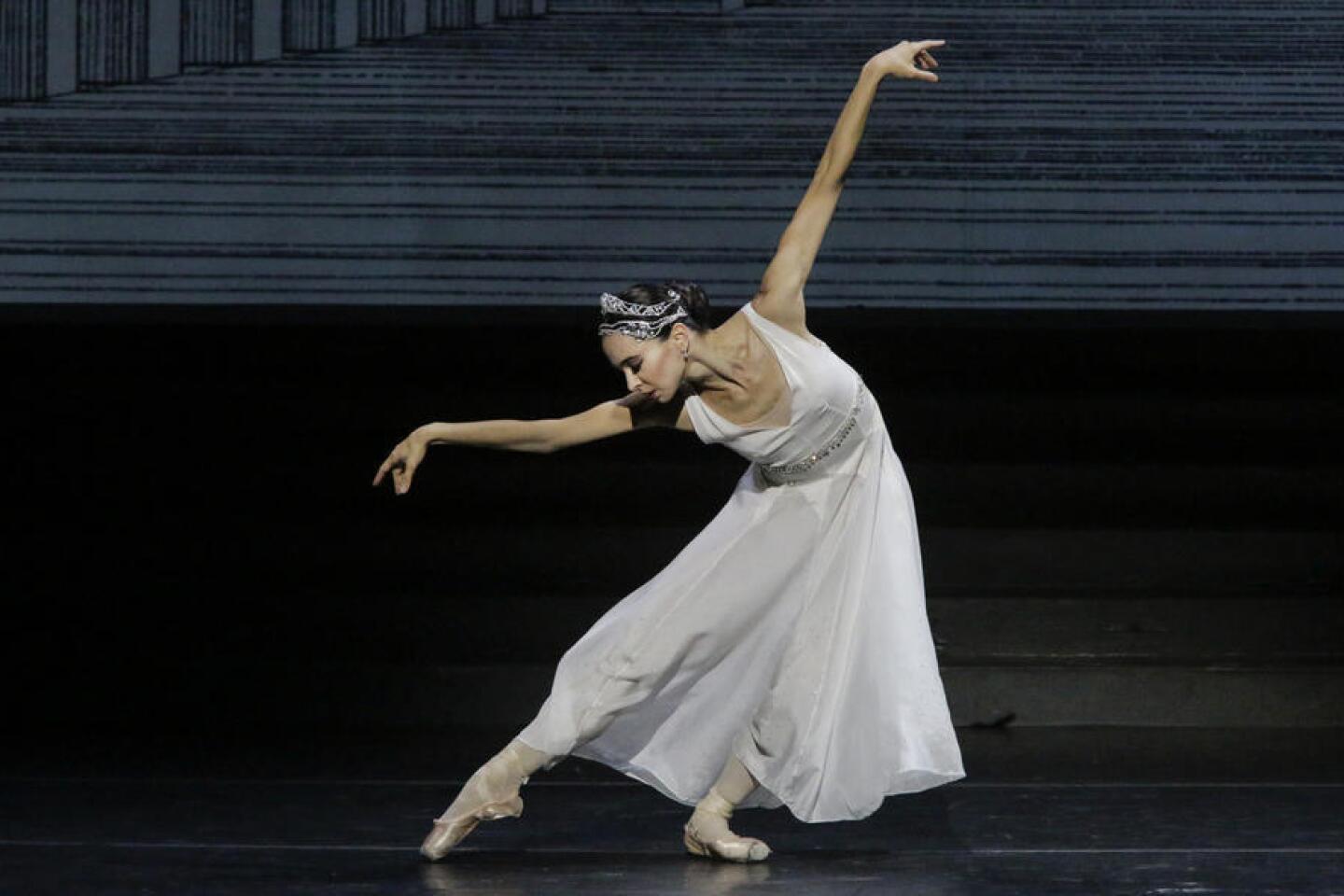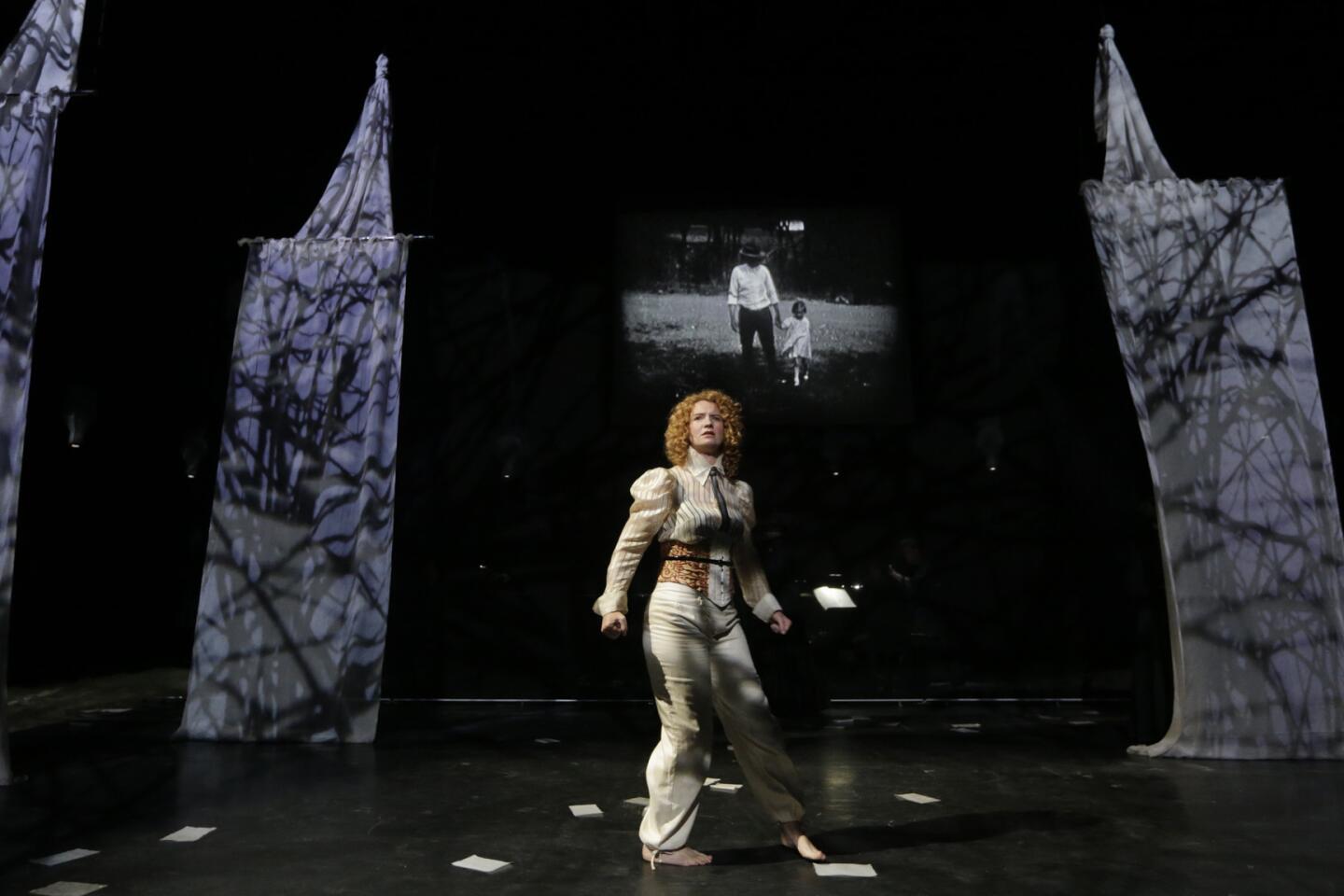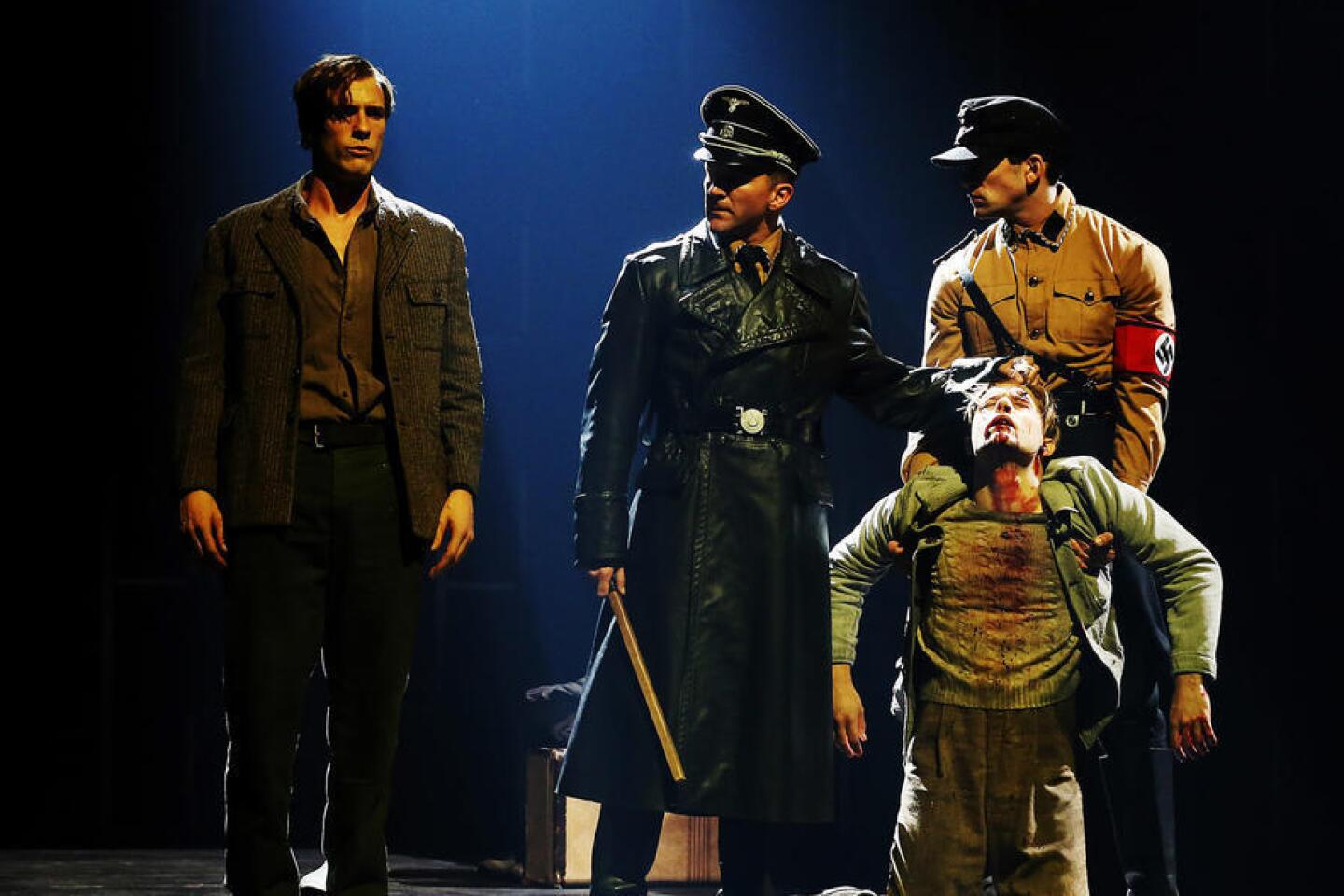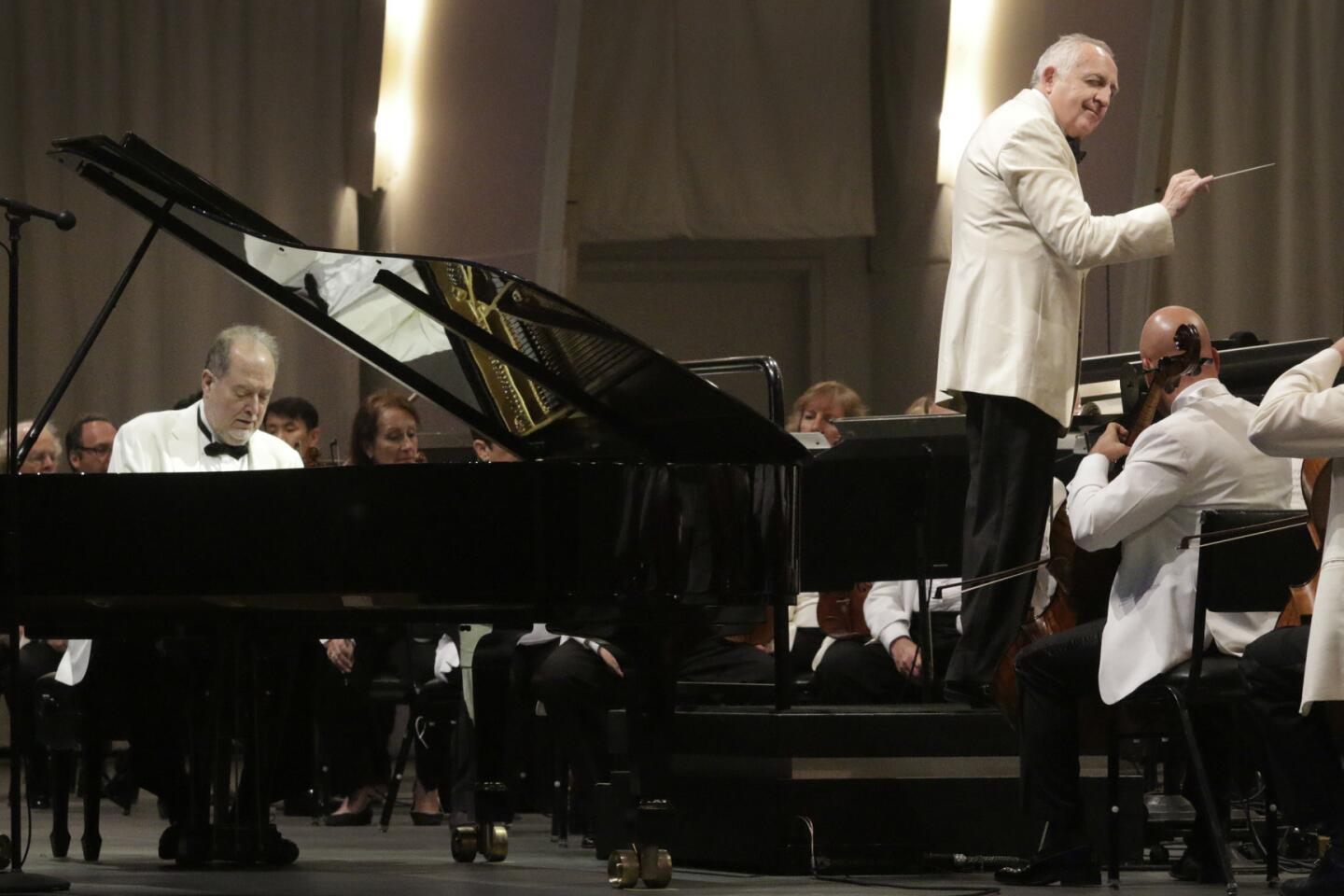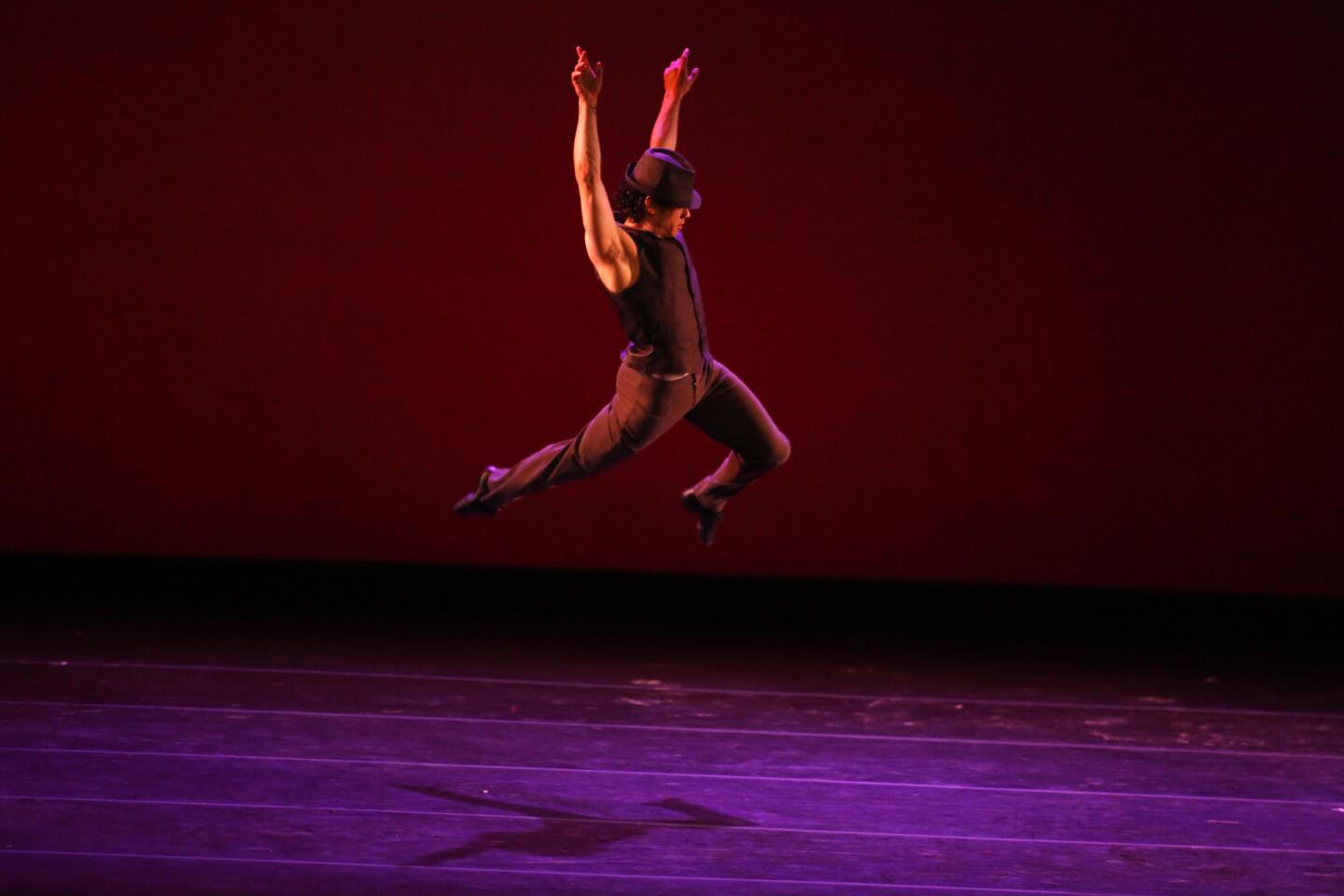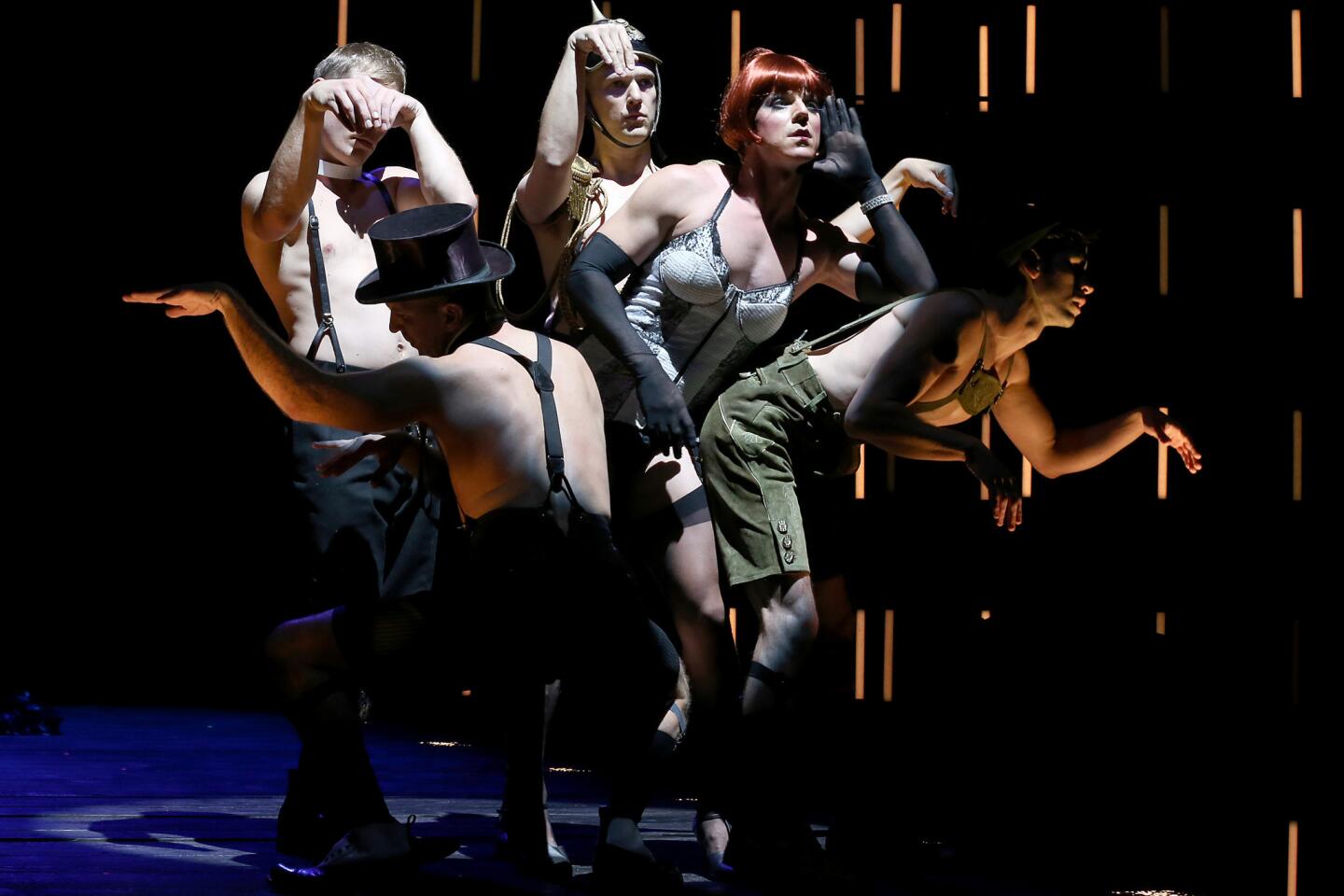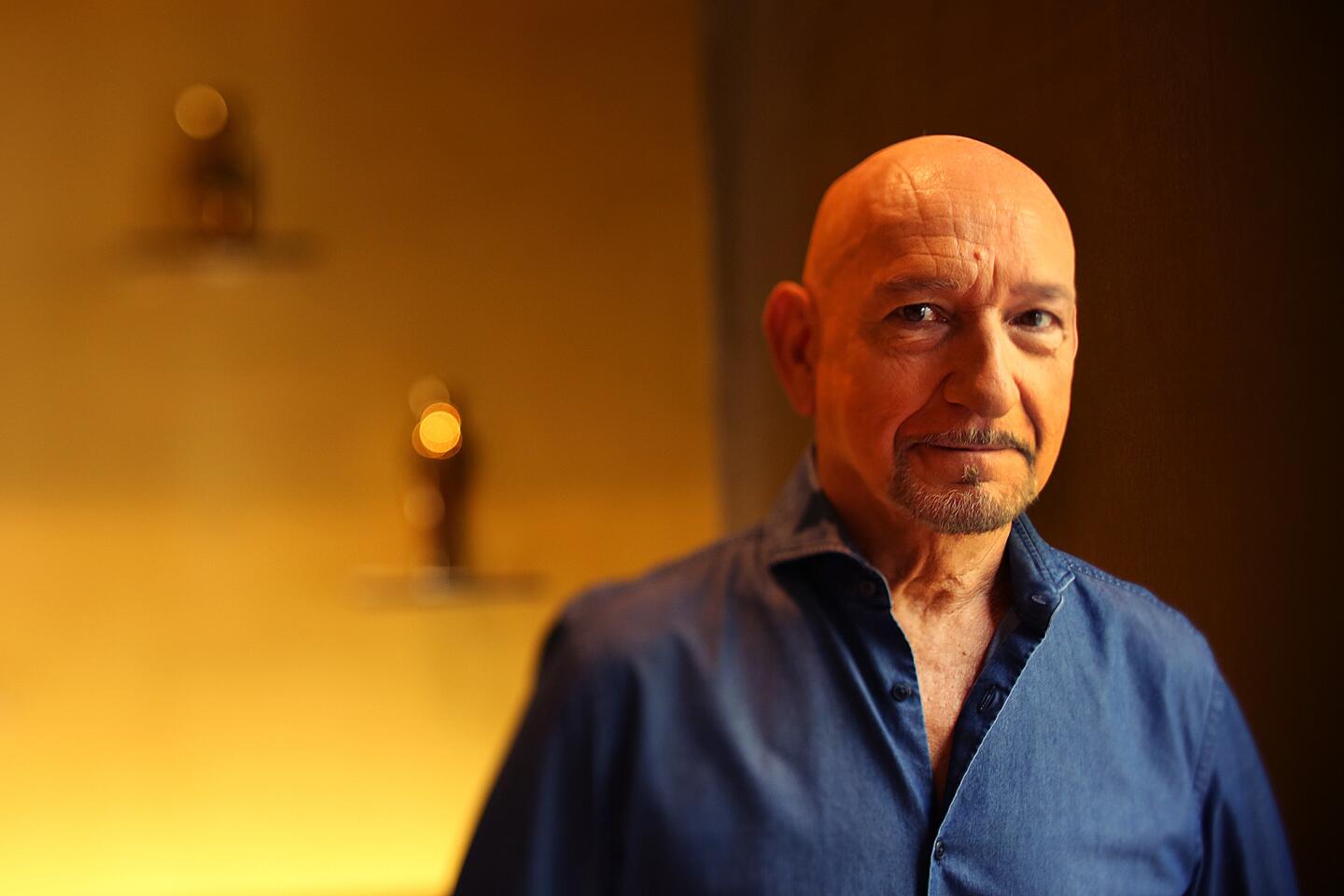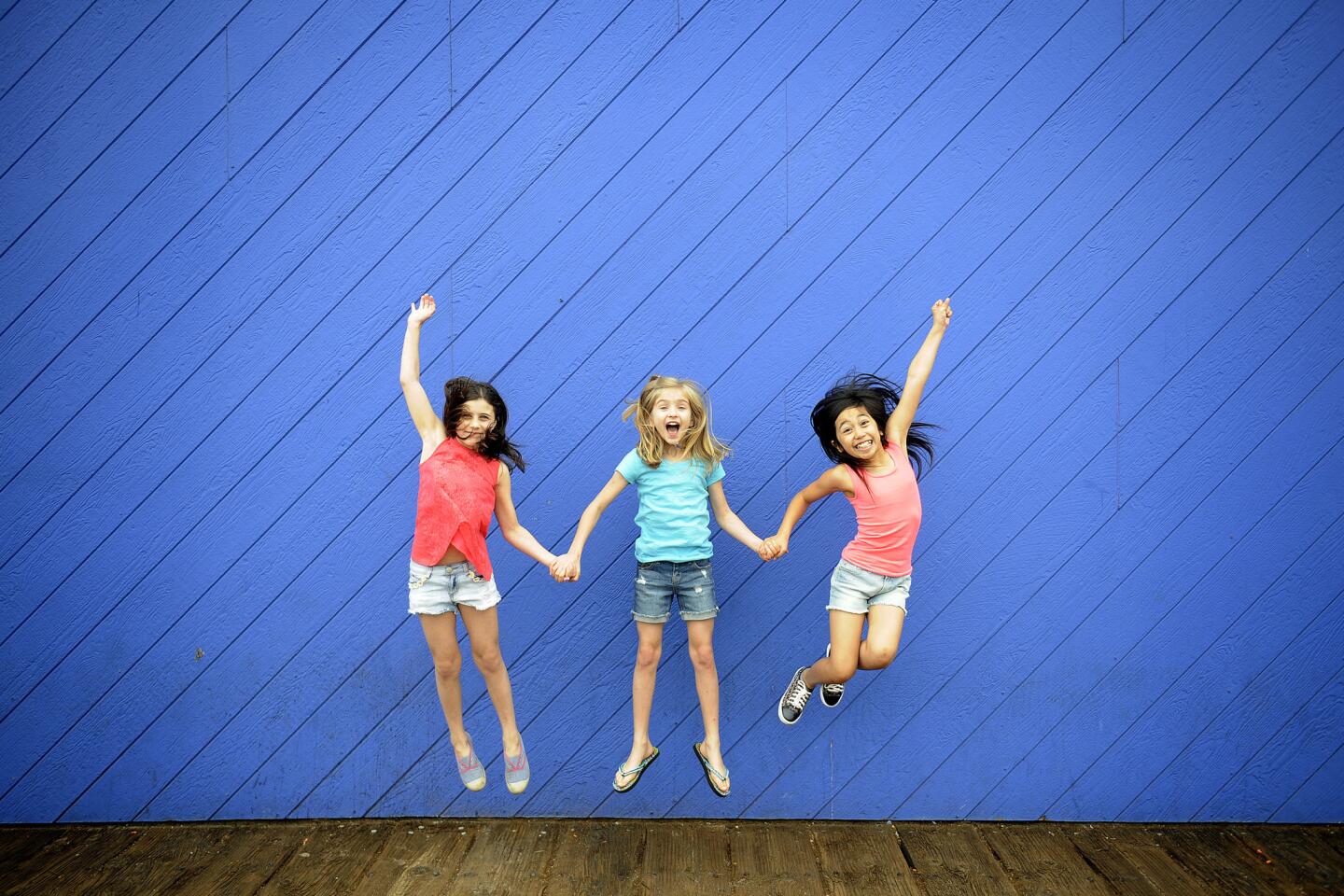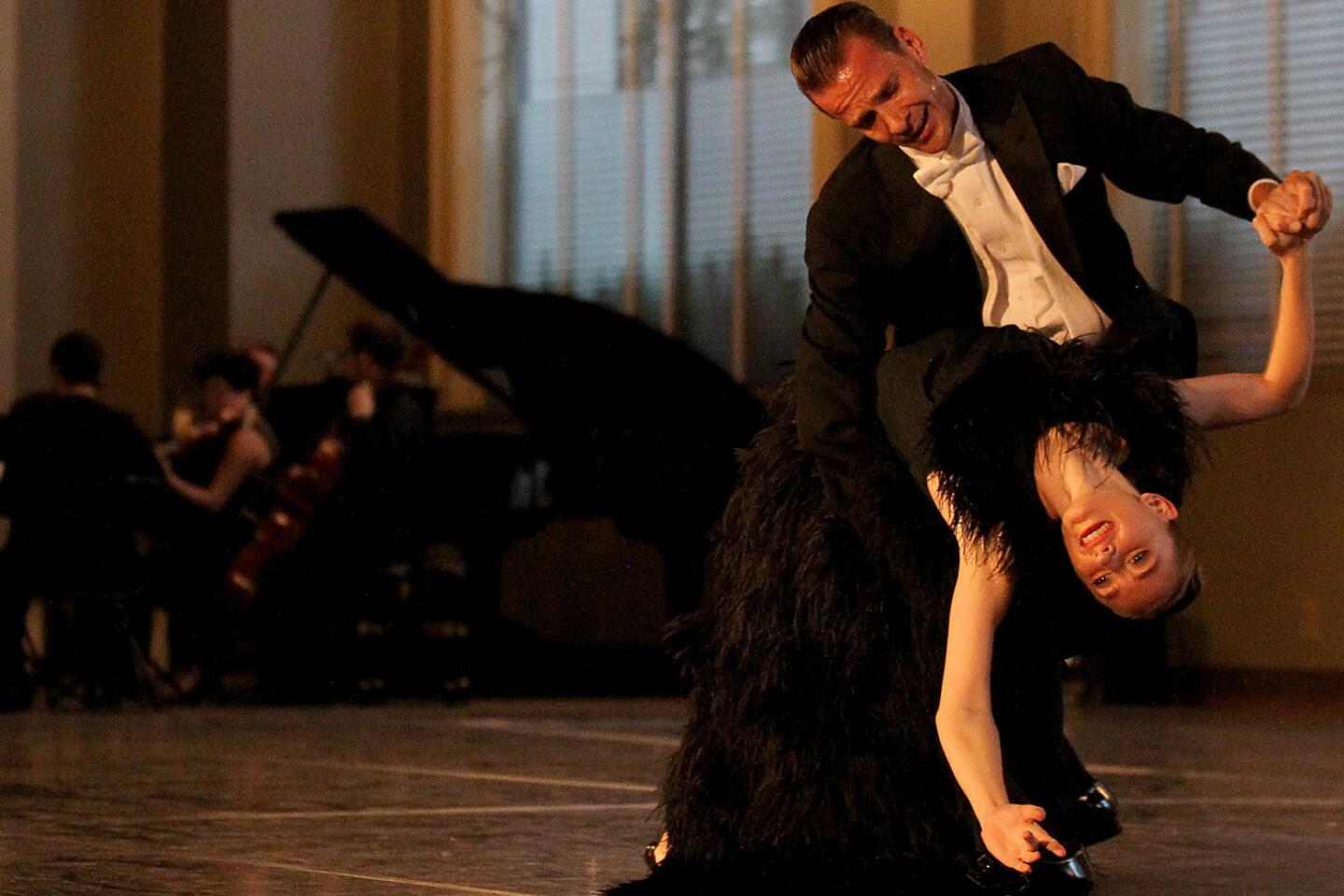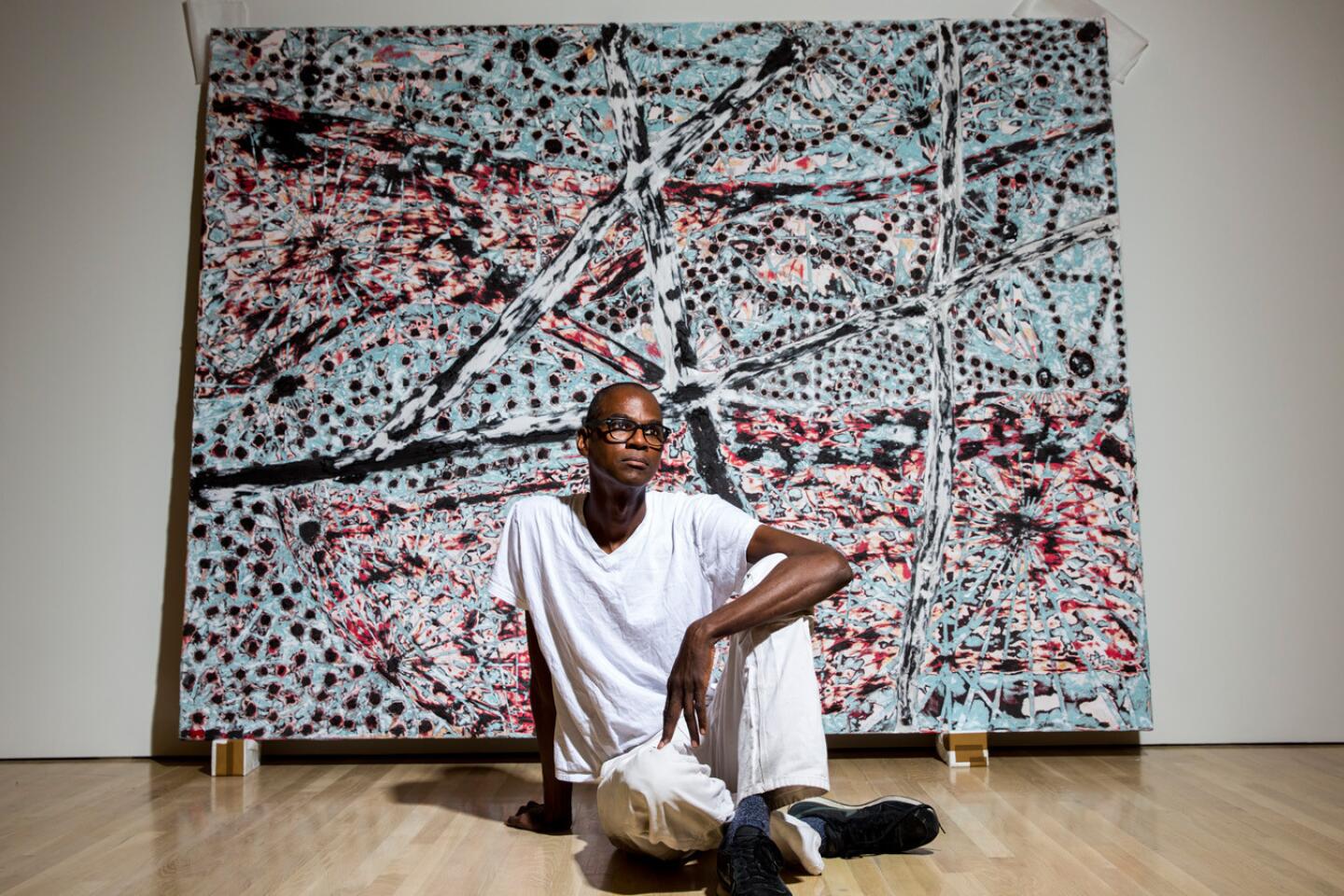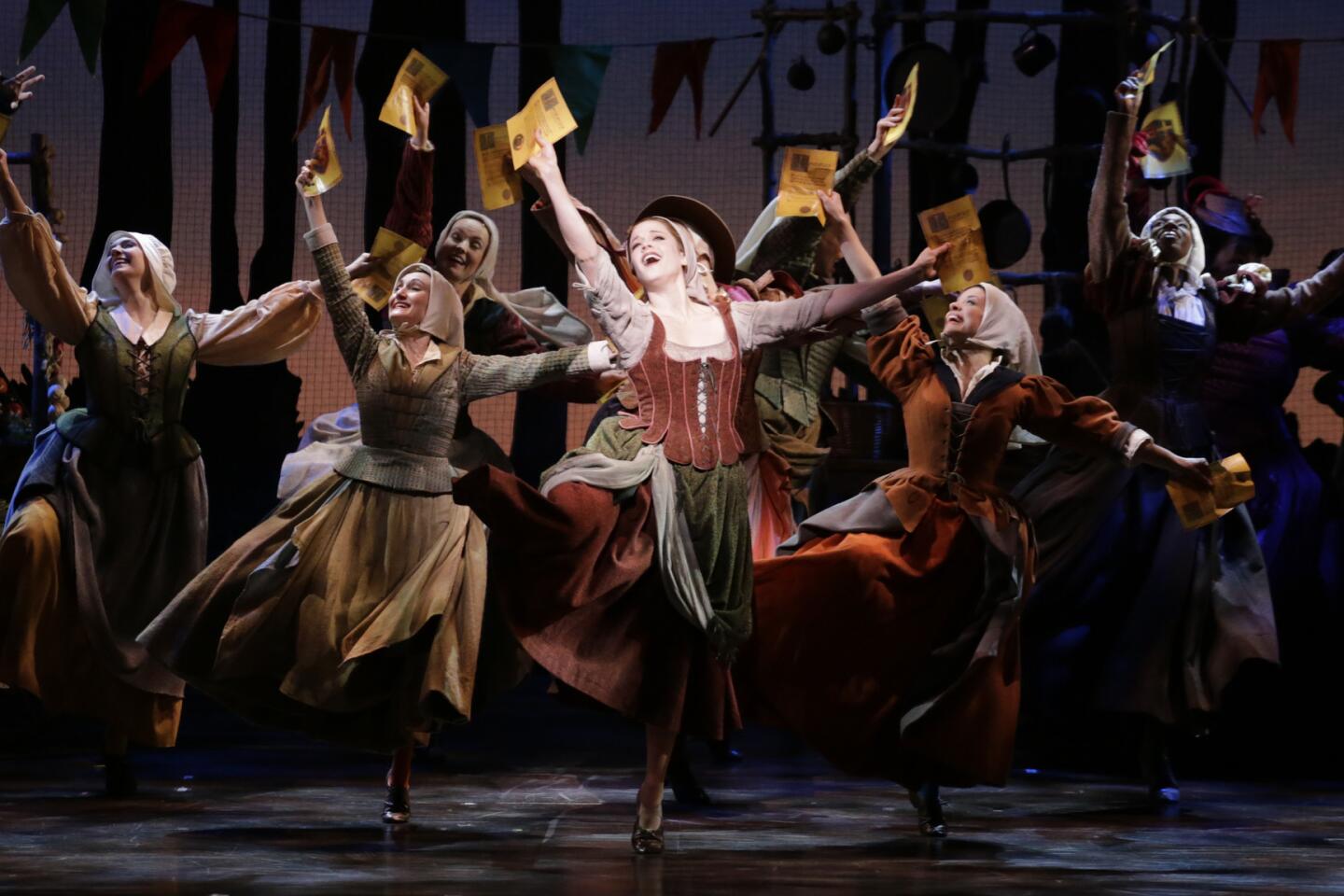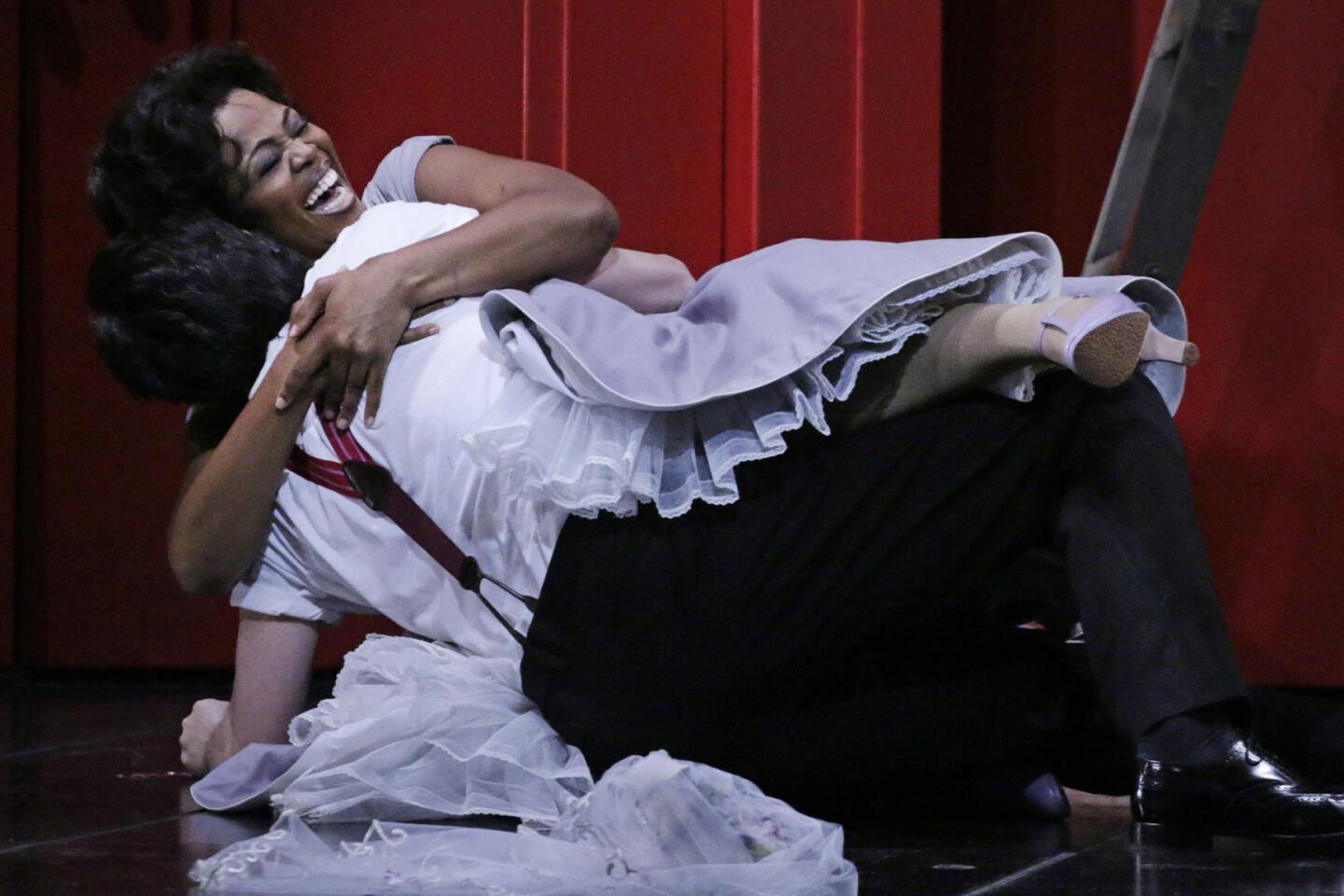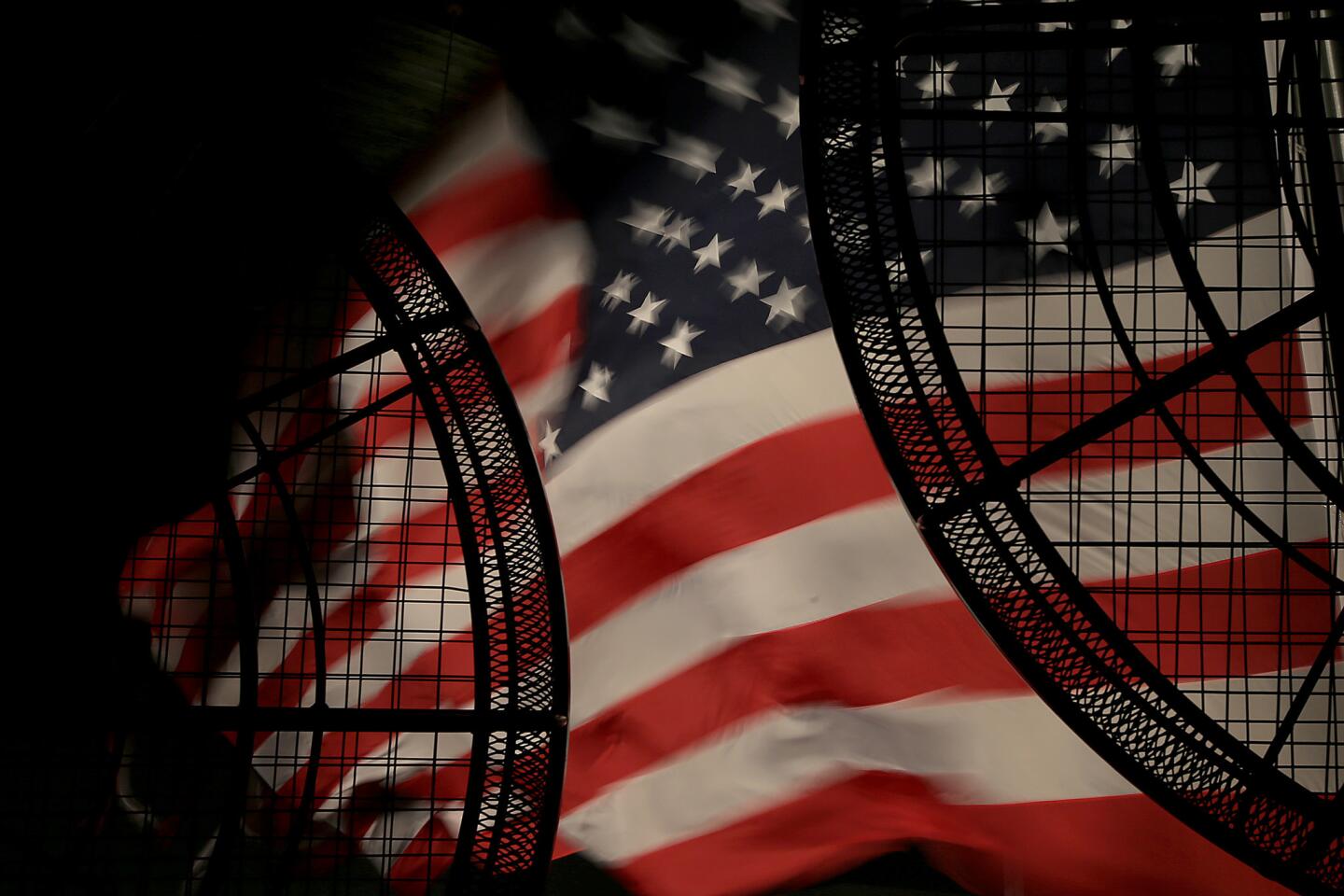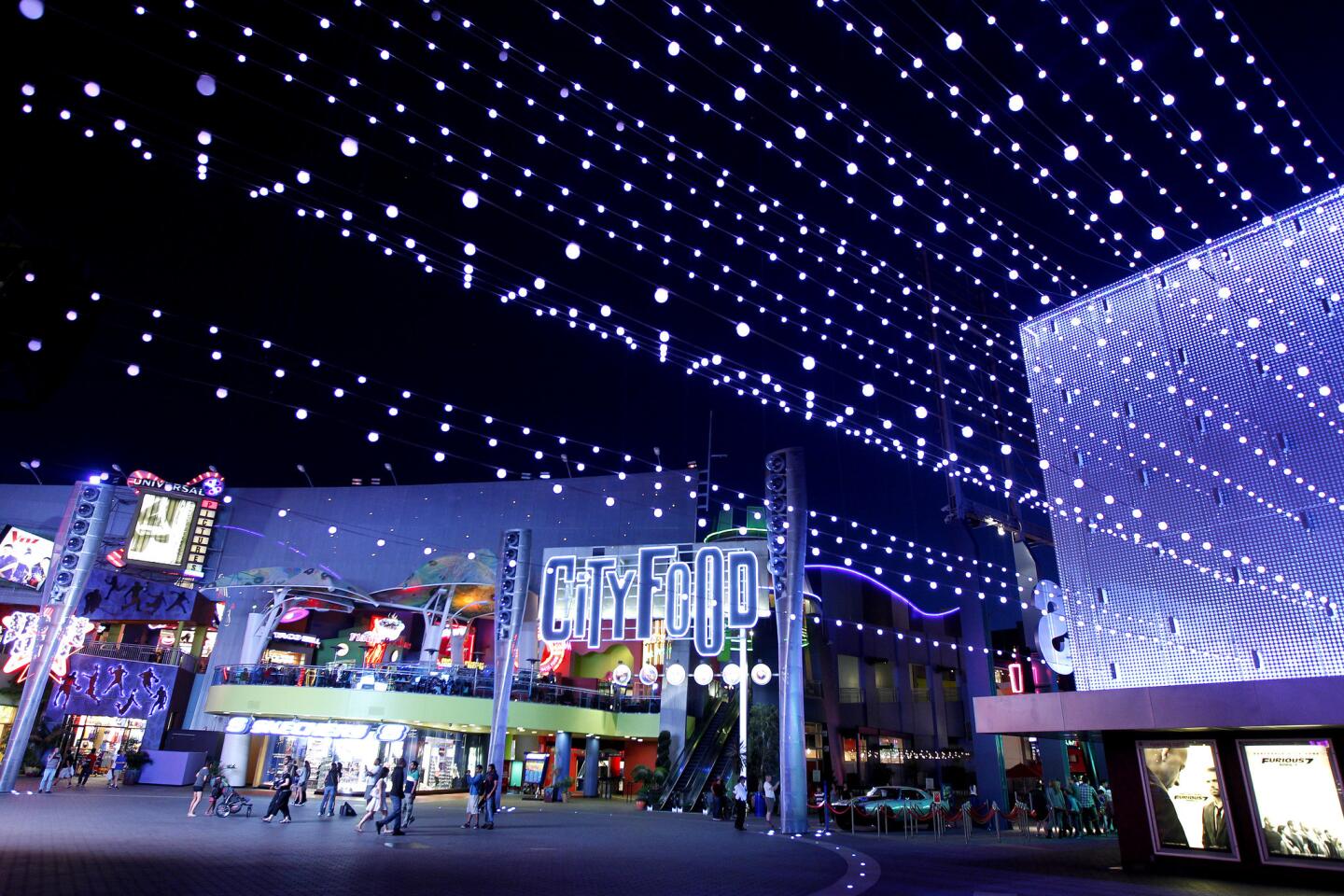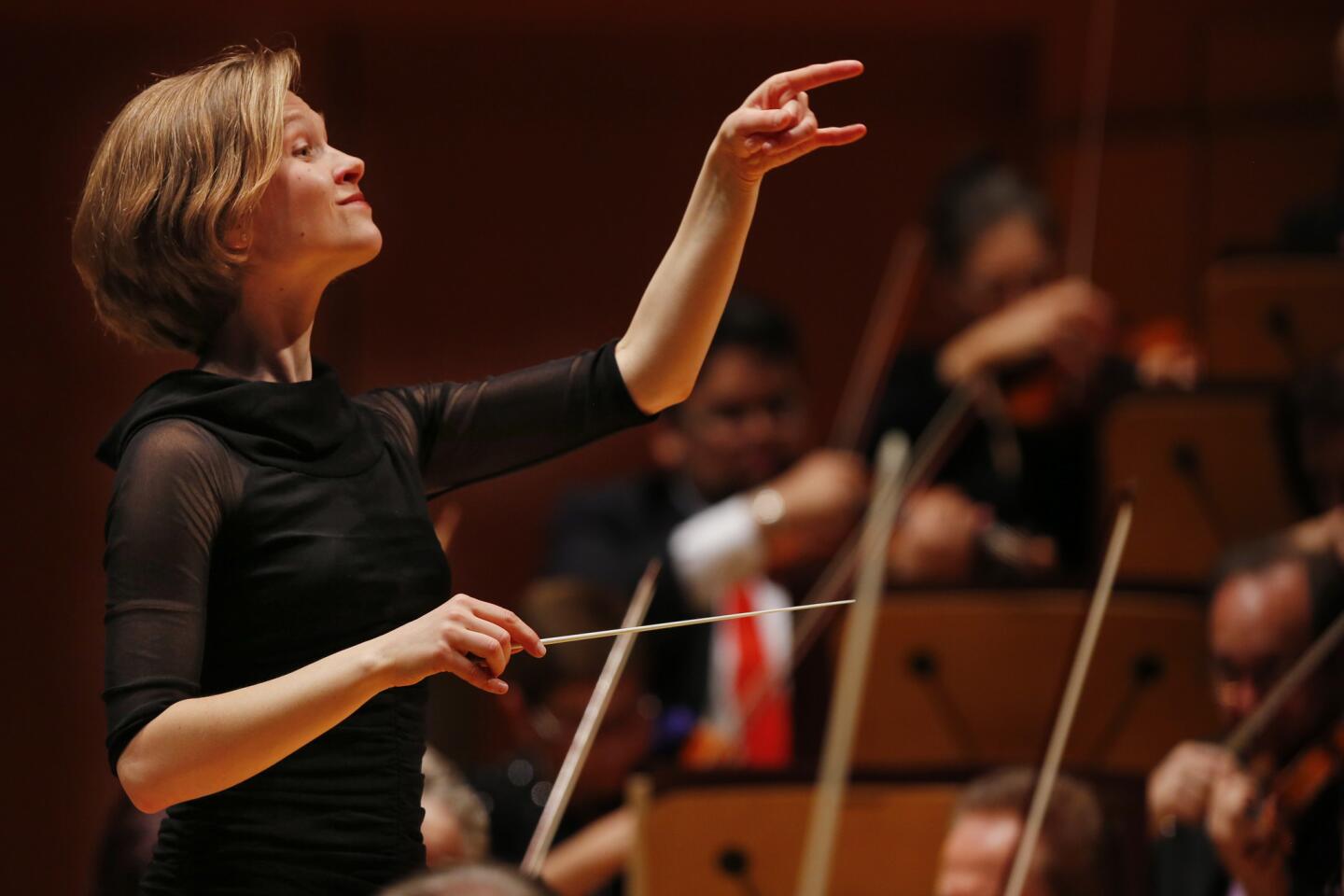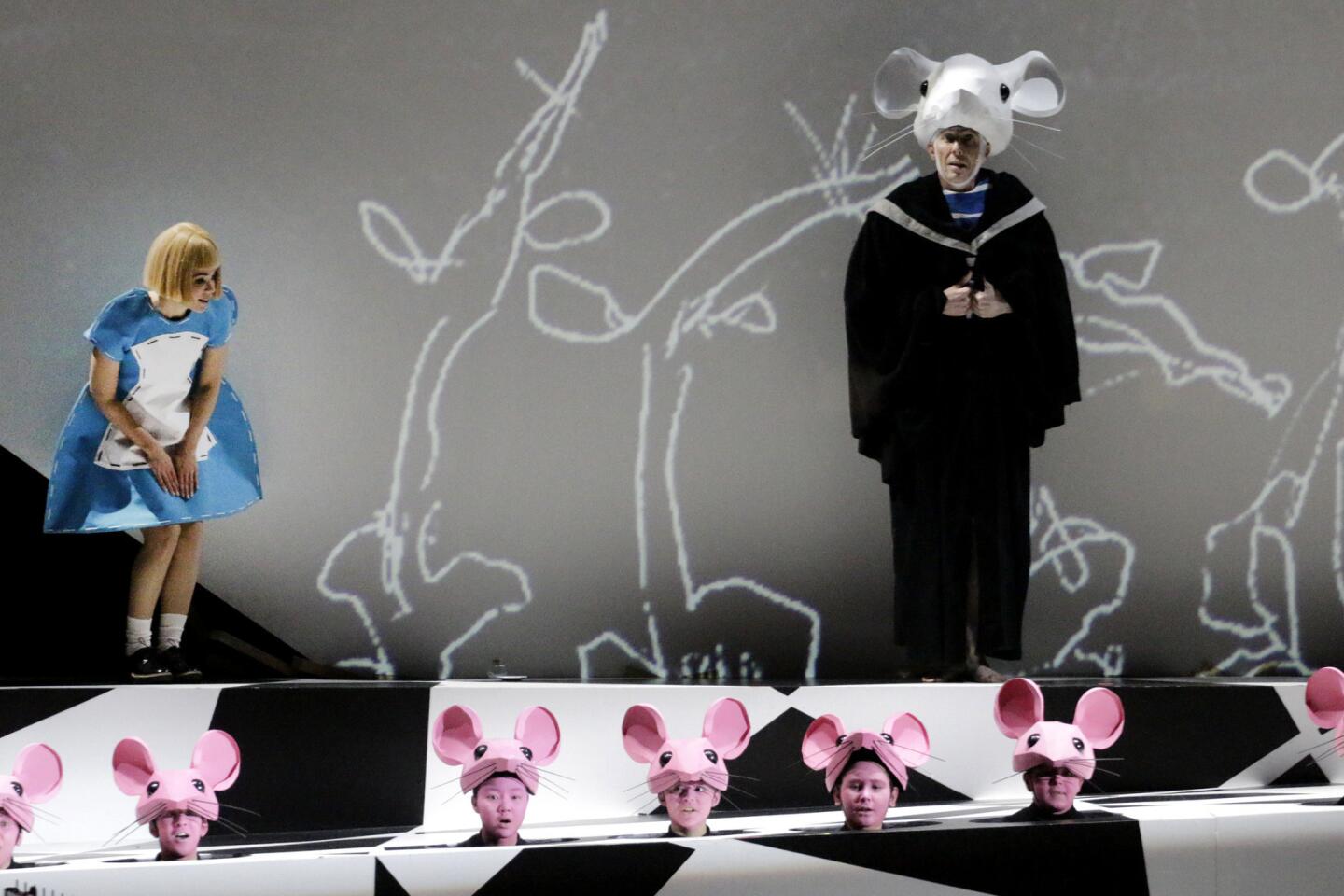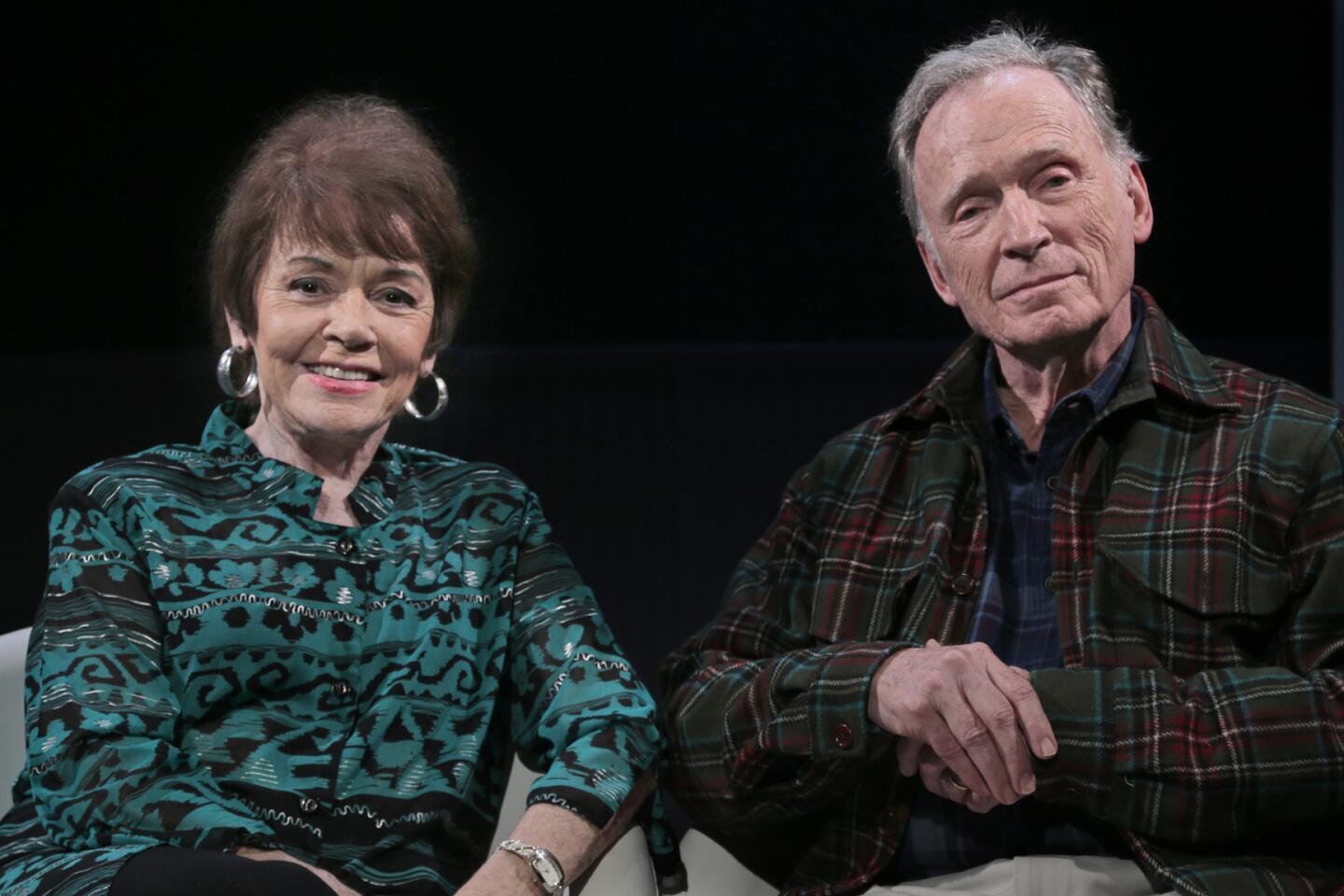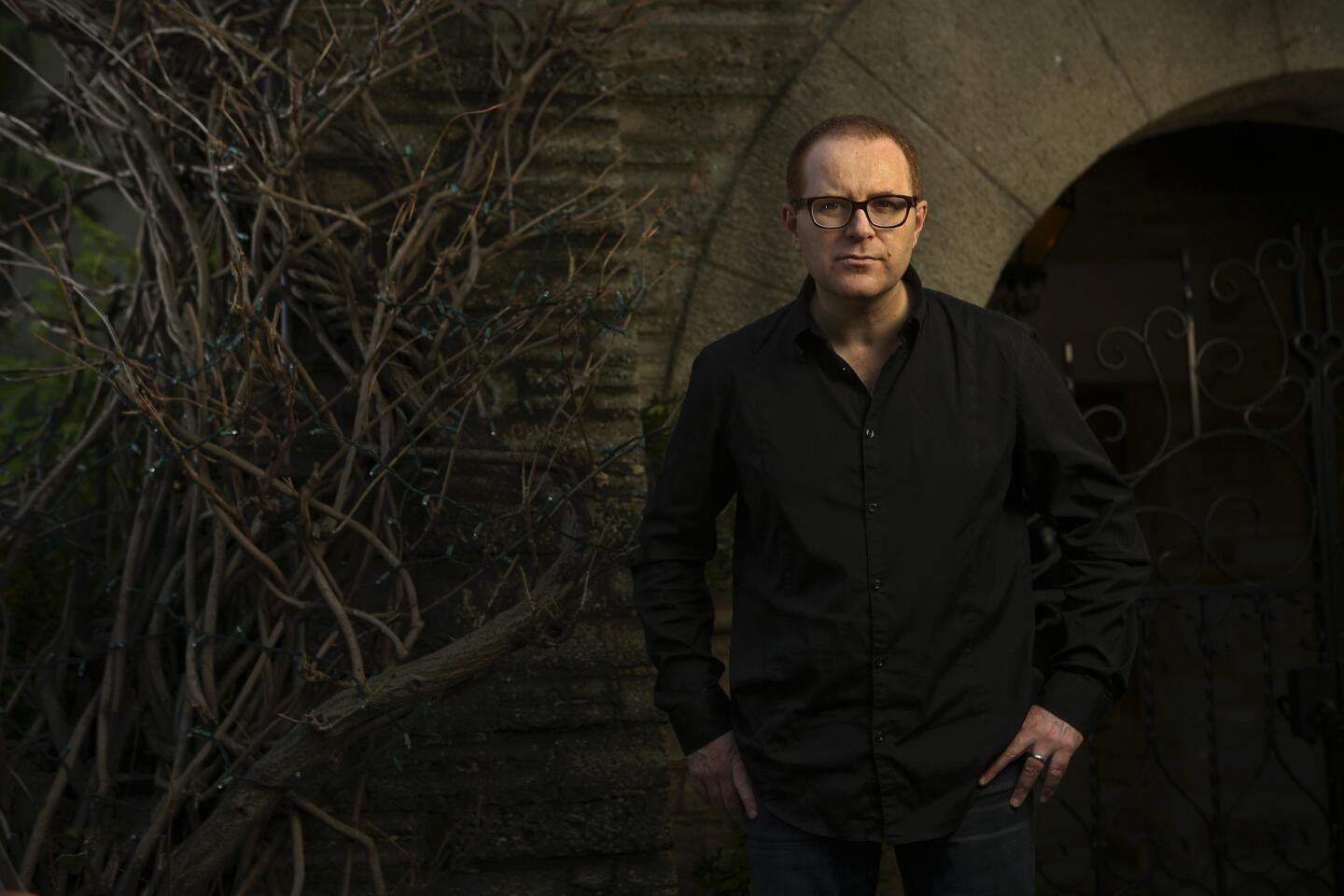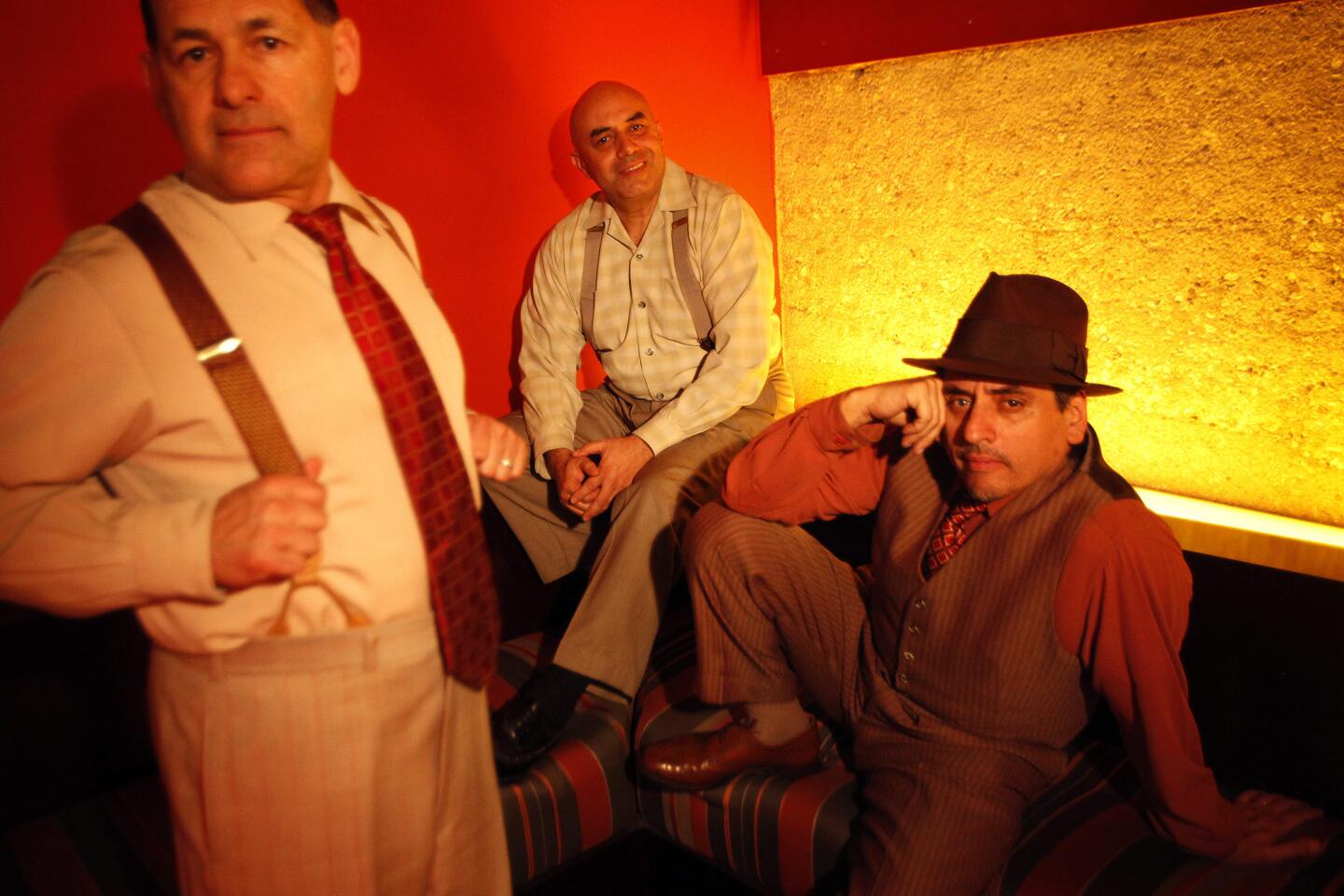‘Diana Thater: The Sympathetic Imagination’ at LACMA stuns the senses
Walls dissolve in Diana Thater’s beautiful, affecting retrospective at the Los Angeles County Museum of Art. For 25 years, the L.A. artist has been creating immersive video installations that appear to breach the contours of the gallery, transporting viewers into other realities: swimming with dolphins, interacting with wolves or exploring the contaminated ruins of the Chernobyl nuclear power plant.
Throughout, Thater has exploited the technology and conventions of video to examine the nature of perception and to probe the fraught line between human and animal.
SIGN UP for the free Essential Arts & Culture newsletter >>
With just 22 works, “Diana Thater: The Sympathetic Imagination” is tightly focused, somewhat austere but nevertheless stunning. Curators Lynne Cooke of the National Gallery of Art in Washington, D.C., and Christine Y. Kim of LACMA have selected major pieces and given them ample space to play. They forgo wall labels, and some of the room-filling installations overlap a bit, suffusing the space in lovely fields of colored light. (An indispensable gallery guide includes maps, titles and a brief artist statement for each work.) The exhibition is split among three buildings on the LACMA campus, but even this potential disconnect provides welcome breathers from what might otherwise become retinal overload.

Watch the trailer for LACMA’s “Diana Thater: The Sympathetic Imagination” installation.
The show opens in the Art of the Americas building with works from the 1990s and early 2000s. “Delphine,” from 1999, transforms the walls and floor with images of dolphins swimming in rapturous undulations. Four rhomboid projections, like the exploded walls of a fish tank, splay across the room, bending its corners back upon themselves and creating the impression of a space freed from gravity and right angles. These are anchored on one side by a freestanding wall of monitors displaying a pulsing blue sun. The disorienting whole is suffused in a hot-pink glow that further unmoors the space from reality. It is designed to evoke the way dolphins navigate in their horizon-less, underwater environment; it approaches an out-of-body experience.
In other works, Thater has used the video camera’s particular way of “seeing” as another way to make things strange. In “Oo Fifi, Five Days in Claude Monet’s Garden, Part 1 and Part 2,” from 1992, she split footage of the famed estate into its constitutive color channels: red, green and blue. Each channel is then presented slightly off-register to create a fractured, multiple, somewhat dizzying image. The works refer to Monet’s fragmenting of perception into daubs of paint, but the bobbing and weaving of the camera through the flowers and leaves also suggest the movement of a flying insect or bird. Video technology becomes an avenue not for reproducing human vision but for imagining an inhuman one.
“China,” from 1995, also exploits the conventions of the camera. Eight scenes, projected floor-to-ceiling in the round, each depicts a different view of the same interaction: human trainers trying to get a pair of wolves (one of which is named “China”) to sit in the center of a circle. As the wolves scamper across the frames, distinctly not obeying, we see them from multiple vantage points but can never quite grasp the whole picture. For one thing, our shadows interfere — there is no avoiding the glare of the projectors — but we are also embedded in the piece in a more oblique way. In each frame, a camera is visible in the distance, recording the footage projected on the opposite wall. Although it doesn’t actually see us, its gaze fixes us at the empty center of this panorama, in the wolves’ place.
Viewers also play a part in the layered imagery of “Chernobyl,” from 2011, on view with four other works in LACMA’s Broad Contemporary Art Museum building. (Two pieces appear in the lobby of the Bing Theater.) In recent years, Thater has moved away from dissecting the technical qualities of her medium in favor of inventive layering and juxtaposition. In Chernobyl, the Ukrainian site of one of the worst nuclear meltdowns in history, she shot footage of the deserted and ruined streets, which have gradually been overrun by plants and wildlife even though the site is still dangerously radioactive. She then projected this footage on the interior walls of a ruined movie theater and shot the resulting imagery from multiple points of view.
This footage is projected in the round like “China,” and the result is deeply affecting, juxtaposing healthy-looking wild horses, swans and lush plant life with rubble and neglect. Nature triumphs over human habitation, but only, ironically, because humanity has unleashed an invisible poison. The piece layers outside and inside, nature and civilization, rebirth and decay on the ruined stage of our collective imagination: the movie theater. As a product of the Soviet Union, Chernobyl is also the specter of another ruined collective imagining.
As with “China,” the work is impossible to see without becoming a part of it. In the swirl of imagery, our shadows make stark and obtrusive voids, while our bodies, their contours dissolving amid the projections, feel almost invisible. Try as you might, there is nowhere to stand and passively observe. Everyone is involved.
This is where Thater’s work separates itself from traditional nature films and other nonfiction filmmaking. Such media usually fixate on strange beings, places or behaviors as objects of dispassionate study, but Thater proposes a more reciprocal relationship, asking in an artist’s statement: “What do I see when I look at the other and what does it see when it looks back at me?” Her absorbing, challenging work pushes us to find out.
-----------------------------
‘Diana Thater: The Sympathetic Imagination’
Where: Los Angeles County Museum of Art, 5905 Wilshire Blvd., Los Angeles
When: Through Feb. 21; closed Wednesdays
Info: (323) 857-6000, www.lacma.org
More to Read
The biggest entertainment stories
Get our big stories about Hollywood, film, television, music, arts, culture and more right in your inbox as soon as they publish.
You may occasionally receive promotional content from the Los Angeles Times.
